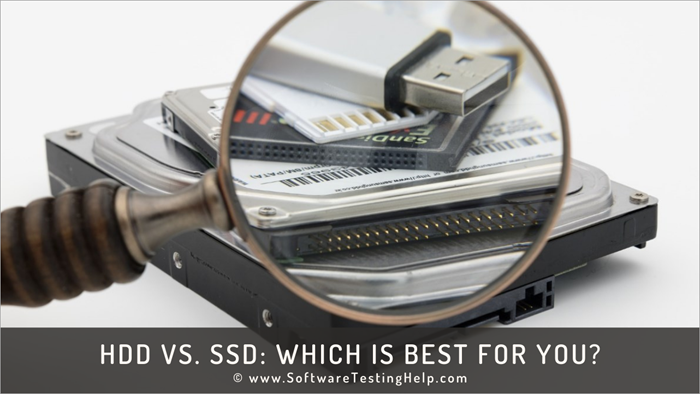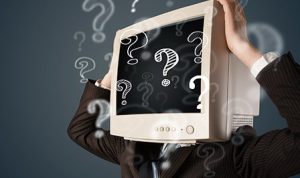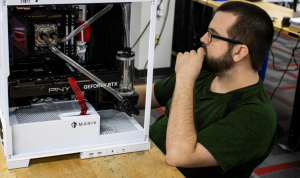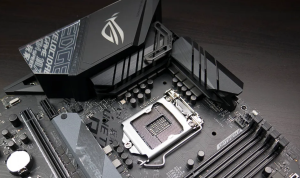SSD vs HDD Which Storage Option Is Right for You sets the stage for a conversation that many tech enthusiasts and everyday users alike often find themselves pondering. With the constant evolution of technology, understanding the differences between Solid State Drives (SSDs) and Hard Disk Drives (HDDs) is essential for making informed choices about data storage. In this exploration, we will delve into the defining characteristics of each option, their respective advantages and disadvantages, and how these factors can impact your computing experience.
From speed and performance to longevity and capacity, each storage solution offers unique benefits that cater to various needs. Whether you’re a gamer looking for quick load times, a professional handling large files, or simply an everyday user requiring reliable storage, recognizing the strengths of SSDs and HDDs can help you determine which option aligns better with your requirements.
In today’s world, where technology and information flow at lightning speed, the art of effective communication has never been more crucial. As we navigate through our personal and professional lives, mastering the nuances of communication can significantly impact our relationships and success. This article aims to explore the various dimensions of communication, offering insights and practical tips to enhance your skills.
Understanding CommunicationAt its core, communication is the process of exchanging information, ideas, thoughts, and feelings between individuals. This process can take many forms—verbal, non-verbal, written, and visual. Each type plays a vital role in how we connect with one another. Understanding these different forms is the first step in becoming a proficient communicator. Verbal CommunicationVerbal communication is the spoken word.
It’s essential in our day-to-day interactions, whether we’re engaging in casual conversations or delivering formal presentations. To enhance your verbal communication skills, consider the following tips:
1. Clarity and Conciseness
Aim to convey your message in a clear and straightforward manner. Avoid jargon or overly complex language, which can confuse your audience.
2. Active Listening
Effective communication is a two-way street. Practice active listening by giving your full attention to the speaker, showing empathy, and responding appropriately.
3. Tone and Inflection
Your tone of voice can significantly influence how your message is received. Be mindful of your inflection and adjust it to match the context and emotion of the conversation. Non-Verbal CommunicationNon-verbal communication includes body language, facial expressions, and gestures. These cues often convey more than words alone. Here are some strategies to improve your non-verbal communication:
1. Maintain Eye Contact
Making consistent eye contact demonstrates confidence and helps build trust with your audience.
2. Be Aware of Your Body Language
Your posture, gestures, and movements can communicate a lot about your feelings and intentions. Ensure your body language matches your verbal message.
3. Facial Expressions
Your face can express a wide range of emotions. Be conscious of your expressions; they should align with your spoken words for effective communication. Written CommunicationIn an era dominated by digital communication, writing has become a crucial skill. Effective written communication can make or break a professional relationship. Here are some tips to enhance your writing skills:
1. Know Your Audience
Tailor your writing style to suit your audience. Consider their preferences and adjust your language accordingly.
2. Structure and Organization

A well-organized document is easier to read and understand. Use headings, bullet points, and short paragraphs to make your writing more accessible.
3. Proofread and Edit
Always review your writing for grammatical errors and typos. A polished piece reflects professionalism and attention to detail. Visual CommunicationVisual communication involves the use of images, graphs, and other visual elements to convey information. It’s particularly effective in presentations and marketing materials. To maximize the impact of your visual communication:
1. Choose the Right Visuals
Select images and graphics that enhance your message. They should be relevant and support your content, not distract from it.
2. Keep it Simple
Avoid cluttering your visuals with too much information. A clean, simple design is often more impactful and easier to understand.
3. Consistency
Maintain a consistent style across your visual elements to create a cohesive look. This includes color schemes, fonts, and layouts. Cultural Considerations in CommunicationIn our increasingly global society, understanding cultural differences in communication is essential. Different cultures have varying norms and expectations regarding communication styles. Here are a few points to keep in mind:
1. Research and Respect
Take the time to learn about the cultural backgrounds of those you are communicating with. Show respect for their traditions and practices.
2. Be Mindful of Language Barriers
If you’re communicating with someone who speaks a different language, be patient and consider using clear, simple language.
3. Adapt Your Style
Be flexible in your communication style. Some cultures value directness, while others prefer a more indirect approach. The Role of Technology in CommunicationAs technology continues to evolve, so does the way we communicate. From social media platforms to video conferencing tools, technology has transformed our communication landscape. While these tools offer convenience, they also present challenges.
Here are some ways to navigate technology in communication:
1. Choose the Right Medium
Different situations call for different communication tools. Consider whether an email, phone call, or face-to-face meeting is most appropriate.
2. Be Cautious with Tone
Written communication can sometimes lead to misunderstandings, as tone is often lost. When in doubt, consider following up with a call or in-person meeting.
3. Limit Distractions
When using technology for communication, minimize distractions. Turn off notifications and create a focused environment to enhance the quality of your interaction. ConclusionEffective communication is a multifaceted skill that requires ongoing practice and adaptation. By understanding the different forms of communication, honing your verbal, non-verbal, written, and visual communication abilities, and being mindful of cultural differences, you can significantly improve your interactions with others.
Additionally, as technology continues to shape our communication landscape, staying adaptable and aware of its impact will further enhance your communication skills. Embrace the journey of becoming a better communicator, and you’ll find that your relationships—both personal and professional—will flourish.





